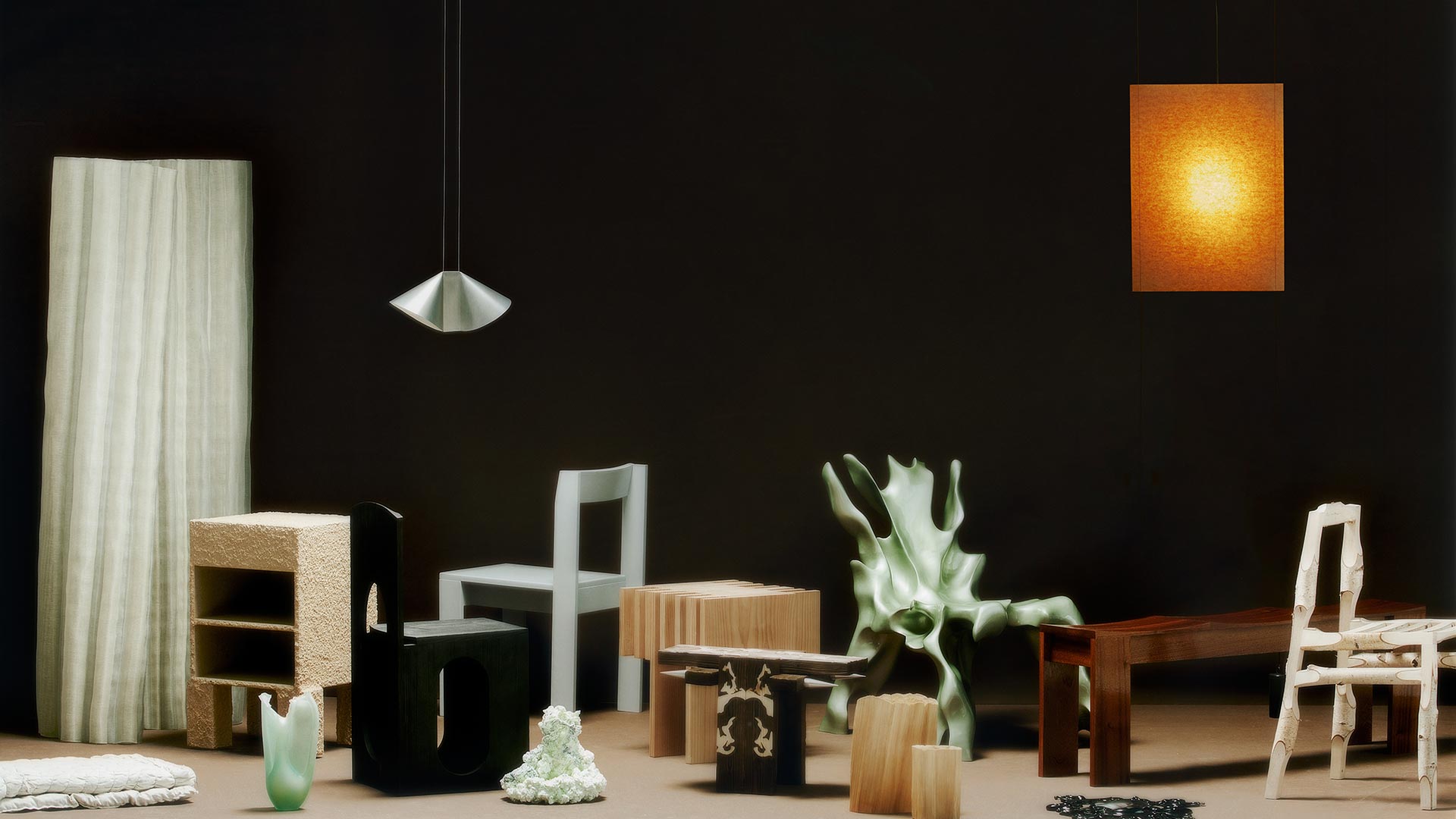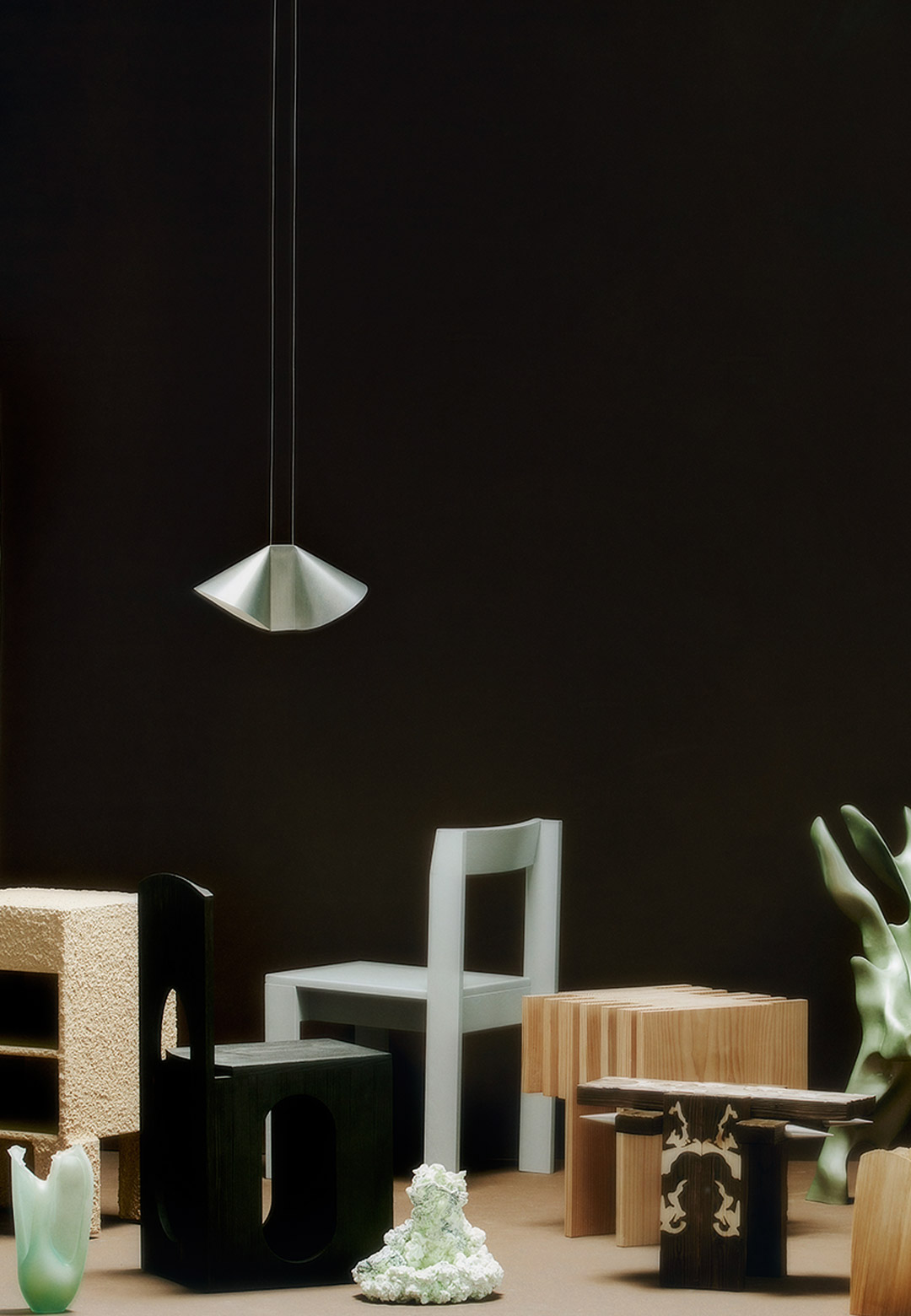The intricate and many-hued rainbow of human existence is coloured by our curiosities, from our inherent need to know and do more. Creative realms too, thrive on disrupting chains of routine, to go beyond the mundane and ordinary. Not that ordinary is boring—there is comfort and familiarity there. It is simply by choosing and daring to think differently from time to time, that we open doors to fresher possibilities, towards renewed aesthetics and uncharted avenues, and perhaps, write and staple undiscovered pages into our spectrum of creative libraries. The ordinary is a canvas on which young creative minds paint their imaginations, transforming the familiar into something extraordinary, fostering our culture of curiosity, as the unexpected is what captivates most.
With an intriguing, curated selection of experimental contemporary design, Ukurant, an award-winning exhibition platform and creative community set upon this very mentation, in its third iteration during the now concluded 3daysofdesign in Copenhagen, Denmark. From June 7 – 10, 2023, Ukurant 3 gathered afresh, emerging designers from the world over, to “contribute with new perspectives on the design scene. With seducing tactility and expressions, Ukurant showcases furniture and interior-related objects that question conventions,” explain Josefine Krabbe, Kasper Kyster, Kamma Rosa Schytte and Lærke Ryom, the young design platform’s founders.
Seeking to prioritise and link the established global design landscape with new generation designers, Ukurant 3, with its exhibited array of objects at the design event, invited discussion about modes of design production, an exploration of new materials in product designs, and deliberation on common notions held within the commercial design circuit. The design exhibition this year showcased an august collection by 18 designers selected from over 200 applicants (who have graduated in the last six years), showcasing objects resounding with “a profound attitude towards the embedded potentials and properties of a diverse range of materials and crafts. With pieces introducing new expressions, tactilities and possibilities–within traditional craftsmanship as well as modern technology, the exhibition (sought) to intrigue, seduce and discuss the future of design,” the founders elaborate.
Of the remarkable, hand-crafted designs shown, ‘Our Beloved and Sacred Sun’ by Polish designer Adam Bialek employed egg-yolk biopolymer, food grade silicone, hide glue, scrap metal hanging system, and electronic and light components. The lamp design was based on the research pertaining to the relationship between humans and the sun, encompassing sun worship, allied rituals, and the iconography of the star, as well as our emotional connect with it, venturing into physically embodying it, “to bring the missing primaeval essence of the sun back into our lives,” the designer relays. Symbolic language correlated with the material with mythological motifs of sunny eggs and the golden womb, the source of life—“’Our Beloved and Sacred Sun’ becomes a tablet depicting an analemma idol emitting light—a personified sun taking shape in an ancient/ modern object symbiosis,” he added.
‘Linoleum’ by furniture designer Lina Chi based in France, Belgium, and the Netherlands used organic and easily re-shapable or recyclable materials such as linseed oil, tree resin, wood flour, limestone, jute, to create furniture designs that softly curl, fall, bend, and move. Through folding and cutting, Chi transformed sheets of linoleum, otherwise ordinarily seen in use within schools, hospitals, and airports, into structurally sound, monochromatic stool designs, benches, and table designs, sans adhesives or permanent bindings. “You’ve walked on it in schools, hospitals, airports, and flats. The recipe for it, entirely renewable resources, hasn’t changed in over a hundred years. (The project) invites us to examine a familiar material by reintroducing the use of linoleum, but this time not as flooring,” the creator relays, who aimed at changing the landscape of interior design settings.
Denmark-based Anna Bruun Kristiansen presented ‘Woven Walls,’ a series of self-supporting woven textiles that function as flexible walls that can be moved around and rearranged, creating smaller spaces and paths in a bigger space. Made of monofilament and pemotex polyesters as well as linen, the sensory and visually arresting project examined how textile designs can unite craft and industry, construction, and poetry. “The textiles consist of several layers making them three-dimensional and creating curves simulating the traditionally draped curtain, but with no need of a fixed hanging system. The curves and stripe patterns also make the textiles able to fold and expand,” the product designer relayed.
In each chapter, Ukurant invites a group of creatives to collaborate and provide their take on visual identity, photography, and exhibition design. Ukurant 3 teamed up with graphic designers Tor S. Johannesen and Marie Heissel, photographer Peter Vinther, and exhibition design duo Liv Marie Rømer and Kamma Rosa Schytte.
STIR spoke to the four founders of Ukurant, on the conceptualisation and curation of their recent edition, as well as their continuing ethos of being ‘founded by young designers for young designers.’
Jincy Iype: What remains at the core of Ukurant? Why is the annual showcase named so?
Ukurant: In Danish, ukurant means something out of the ordinary. This is exactly what we wanted to showcase. During 3daysofdesign, most of what you see is a commercial design, with little to no ambition or no potential for what the future could bring. You see relaunches of an old chair design in a new colour or rehashed collections. We want to show extraordinary design with intent and potential for something more.
Jincy: How did Ukurant 3, focusing on the faculty of emerging product designers, set a course for “conversations about defining yourself as a designer, entering an industry that expects unpaid labour; finding your way in a post-graduate world”?
Ukurant: We see that many design and architecture studios take advantage of young talented creatives to do unpaid labour. This needs to be addressed. What we do is that we want Ukurant to be reinterpreted by young creatives for each year's exhibition. Therefore, we hire and pay a graphic designer to carry out the visual identity for Ukurant, a photographer to lift the curated pieces to another level for the visual coverage for websites and catalogues, and a spatial designer to envision and bring to life the exhibition’s design. We are trying to show that if a small initiative such as Ukurant (whose only economic resources come from funds) can do it, big companies should be able to as well.
Jincy: What can you tell us about the exhibition’s location, and how it influenced the curation of Ukurant 3?
Ukurant: The exhibition was experienced in the surroundings of a historical building located on the Danish island of Refshaleøen, transforming the Barlby Carlsson woodwork factory into an enthralling temporary exhibition space. An area that once housed the restoration and construction of ships, today continues to represent good craftsmanship as a wood workshop.
With the history of the space, its machines and the smell of sawdust, the workshop created scenery for the exhibition that highlighted the tactility and craft of the exhibited pieces. The setting invites its guests behind the scenes, letting us consider the origin of objects and reminding us about the qualities and process of handcrafted pieces. The choice of the location also questioned the conventional exhibition format creating attention on production and the tactile value of design.
Jincy: Why was it essential for you to “show design from a young perspective?”
Ukurant: As a young designer, it can be hard to know what to do, to be able to actually make it as a designer in the cluttered landscape of global modern design. We wanted to create a platform dedicated to design from a young perspective, to nurture a scene where their designs are brought to the big stage and be seen by a lot of people, and hopefully the right ones. Young design is bolder and is often more driven by an ambition to experiment with materiality, aesthetics, and craft, contrasting many established ones who might be comfortable in their privileged positioning.
Jincy: Could you highlight how this year’s exhibition presented “a collection of pieces with a profound attitude towards the embedded potentials and properties of a diverse range of materials and crafts?”
Ukurant: With Ukurant 3, we had what felt like almost all kinds of materiality and crafts, beautifully and succinctly ranging from traditional weaving and hand-carved wood to algorithmic generative design cut by a robot. Ukurant is not limited to a theme. Young design is at its heart. We want to show what the young designers are interested in, how they think, emulate, create now, and not limit them to a certain direction.
Ukurant’s lingering spirit of supporting emerging designers, of encouraging their ideas and designs, supports a culture of curiosity that the landscape of creativity must perpetually uphold. At the intersection of design, craft, and art, the courage and value of indulging in experimental approaches spell potential for global contemporary design, shaking the dust off the conventional. As the founders relay themselves, “Ukurant believes that the perspectives of young designers are crucial in shaping the future of design – driving innovation in a rapidly changing world.”






 Sign in with email
Sign in with email










What do you think?